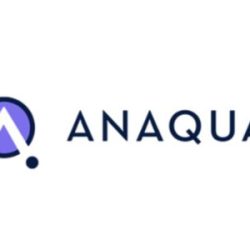3D printing, an innovative manufacturing process, fabricates three-dimensional objects layer by layer, guided by computer-generated designs. This additive methodology involves the sequential stacking of material layers to sculpt intricate 3D components, a departure from traditional subtractive manufacturing methods that carve objects from larger material blocks. This nuanced approach not only fosters precision but also significantly mitigates material wastage—a hallmark of sustainable production practices. While commonly associated with crafting toys and figurines, the scalability of 3D printing extends to ambitious projects like housing construction.
Tvasta Manufacturing Solutions, an entrepreneurial venture founded by alumni of the esteemed Indian Institute of Technology Madras, stands as a testament to the transformative potential of 3D printing in construction. Pioneering the field, it developed India’s inaugural 3D-printed house, leveraging a bespoke concrete blend engineered to facilitate rapid large-scale construction. Its formulation, rooted in standard Portland cement with an optimized water-cement ratio, embodies a strategic fusion of innovation and sustainability, promising to circumvent the ecological burdens traditionally associated with concrete.
Is IP law in India ready for it?
The advancement of 3D printing technology has resulted in the manufacturing of printers with this technology in more compact and portable sizes, making them more widely available and favored for individual use, even in households. Although it is a technical and specialized subject, 3D printing technology is widely used since it is simple to produce and valuable in various applications.
Although 3D printing technology reduces production costs, speeds up production, and makes it more feasible on an individual and industry level, these practical benefits highlight the importance of investigating the concerns that this technology may present to intellectual property (IP) rights. 3D printing technology can be utilized to create a product, innovation, work, or form protected by a patent, utility model, copyright, or design right. This technology also facilitates the execution of production procedures that may violate IP rights.
How are the present market players handling the situation?
Realizing the threat of infringement posed by 3D printing technology, various rights holders have started to develop specific methods to prevent their products from being produced by third parties through this technology. For example, a foreign-based security company marks its products with plant DNA to prevent the unauthorized production of these products by third parties using 3D printing technology. Similarly, another foreign-based company explained that placing a chemically treated fingerprint component under the product’s surface can prevent original products from being counterfeited using 3D printing technology.
Although right holders generally take various measures to prevent third parties from using 3D printing technology in ways that violate their IP rights, it is only possible for some right holders to actively take these measures, as these measures typically require sophisticated engineering work and investment. On the other hand, the widespread use of 3D printing technology, which provides a less expensive, more practical, and more compact production process, opens the door for evil actions by other parties. Furthermore, given the rapid advancement of 3D printing technology, it is unavoidable that the protections implemented by right holders with significant costs and meticulous efforts would become useless at some point.
As a result, it is reasonable to predict that threats and actions of IP infringement involving 3D printing technology will continue to occur in our lives. There is no particular rule in our law that prohibits the infringement of IP rights by using 3D printing technology to create a product, innovation, work, or form protected by a patent, utility model, copyright, or design right. Currently, IP rights are being violated by employing 3D printing technology. However, the Turkish IP rights regulation under the laws outlined in Industrial Property Law No. 6769 (IPL) and the Law on Intellectual and Artistic Works No. 5846 (FSEK) may provide a guideline in the present situation.
This obstacle, which rights holders are expected to have in identifying individuals/organizations who produce in a manner that violates their IP rights, raises another legal issue: assume the infringing person or organization cannot be identified. In that instance, whether the right holders can sue third parties who contributed to the infringement, even if they did not infringe themselves, is questionable. For example, if a third party uses 3D printing technology to make a product owned by a patent holder, the printer manufacturers and 3D printing cartridge suppliers are indirectly involved in the act of patent infringement.
Conclusion
3D printing technology constantly evolves and has become essential for more practical, rapid, and cost-effective manufacturing. Addressing the relationship between 3D printing technology and IP is critical for better defining the limits of legal actions the right holder can take if third parties use this technology to produce IP rights-protected materials.
To summarize, while suitable IP rights holders can make some strategic moves to strengthen their position in the face of infringement threats in the age of 3D printing technology, the legal effectiveness of these moves will inevitably necessitate the adoption of new rules or different interpretations of existing rules.

Written by Harshita Bansal
Managing Associate, United & United

Written by Rashmita Das, LL.M.
Content Strategist, United & United
You may also like…
Enhanced by AI, comprehensive IP management systems are the superior choice
Currently, many organizations are attempting to address their diverse intellectual property (IP) needs by implementing...
The semaglutide saga continues: navigating generic entry and reinforcing patent strategies in Canada
In our July 2025 analysis, “The Semaglutide Story: Highlighting the Need to Maintain Patent Protection in Canada,” we...
Smart AI automation in IP management
Just like websites, smartphones, and open-source software dramatically changed our modern era, artificial intelligence...














